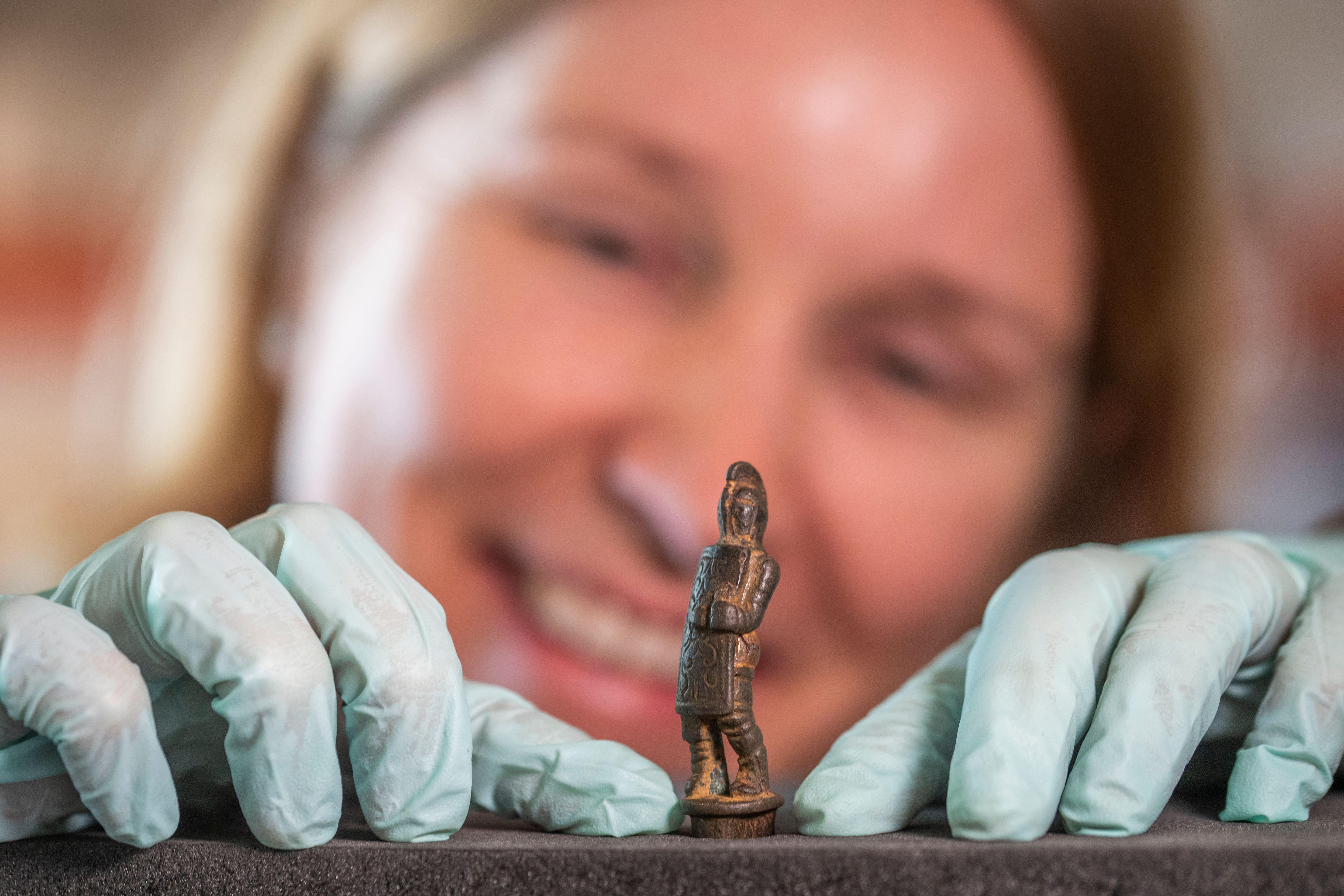‘Proof of celebrity status of gladiators in UK’ coming to Hadrian’s Wall
The knife handle figure, discovered in the River Tyne near Corbridge in Northumberland, is thought to have been bought as a souvenir.

A knife handle featuring a gladiator will go on display at Hadrian’s Wall in England after being discovered by two divers.
The handle, which is about 2,000 years old, was discovered in the River Tyne near Corbridge in Northumberland, and is thought to have been bought as a souvenir.
English Heritage said: “It provides new proof that gladiators’ celebrity status extended to the very edge of the Roman empire.”
The figure of the secutor, a gladiator class, features a helmet and shield and is made of copper alloy.
It is possibly based on a real-life fighter, as he is shown to be left-handed, which historians believe would have been considered unlucky at the time.
Dr Frances McIntosh, English Heritage’s collections curator for Hadrian’s Wall and the North East, told the PA news agency the knife was discovered in the 1990s near the Corbridge Roman site by two divers, and has never been put on display before.
She said the knife handle “was really quite spectacular” and could be an example of “fan memorabilia”.
Dr McIntosh added: “It’s not just a generic person so that’s really exciting as well, to have a specific person potentially represented, which means that the person who owns that knife has made that really purposeful decision to commission and get that knife handle made of a gladiator they are a fan of.”
She also said that it is “not just the colosseum in Rome”, depicted in the film Gladiator and its sequel Gladiator II, released on Friday in the UK, that held fights in front of spectators, and there were examples of at “least 12 amphitheatres where gladiatorial combat was held in Britain”.
Dr McIntosh said: “Anything that kind of puts the past in the public eye and makes them think that it could be really exciting, could only be good for heritage sites.
“And for sort of understanding the past, because if it gets people excited, even if it’s not historically accurate, then it means that they might come and visit a museum or have a look on English Heritage web page to find out some information, or go to their local museum to find out about the facts.”
Aside from those sites already found, she said, there could have been travelling gladiator teams putting on bouts throughout the country, including at Hadrian’s Wall, which was built to defend against the Picts of Scotland.
English Heritage will display the knife at Corbridge Roman Town in 2025, alongside other finds from the River Tyne.
Gladiator II, the hotly anticipated second film in the series, directed by Sir Ridley Scott, stars Paul Mescal, Denzel Washington, Connie Nielsen and Pedro Pascal.
Bookmark popover
Removed from bookmarks